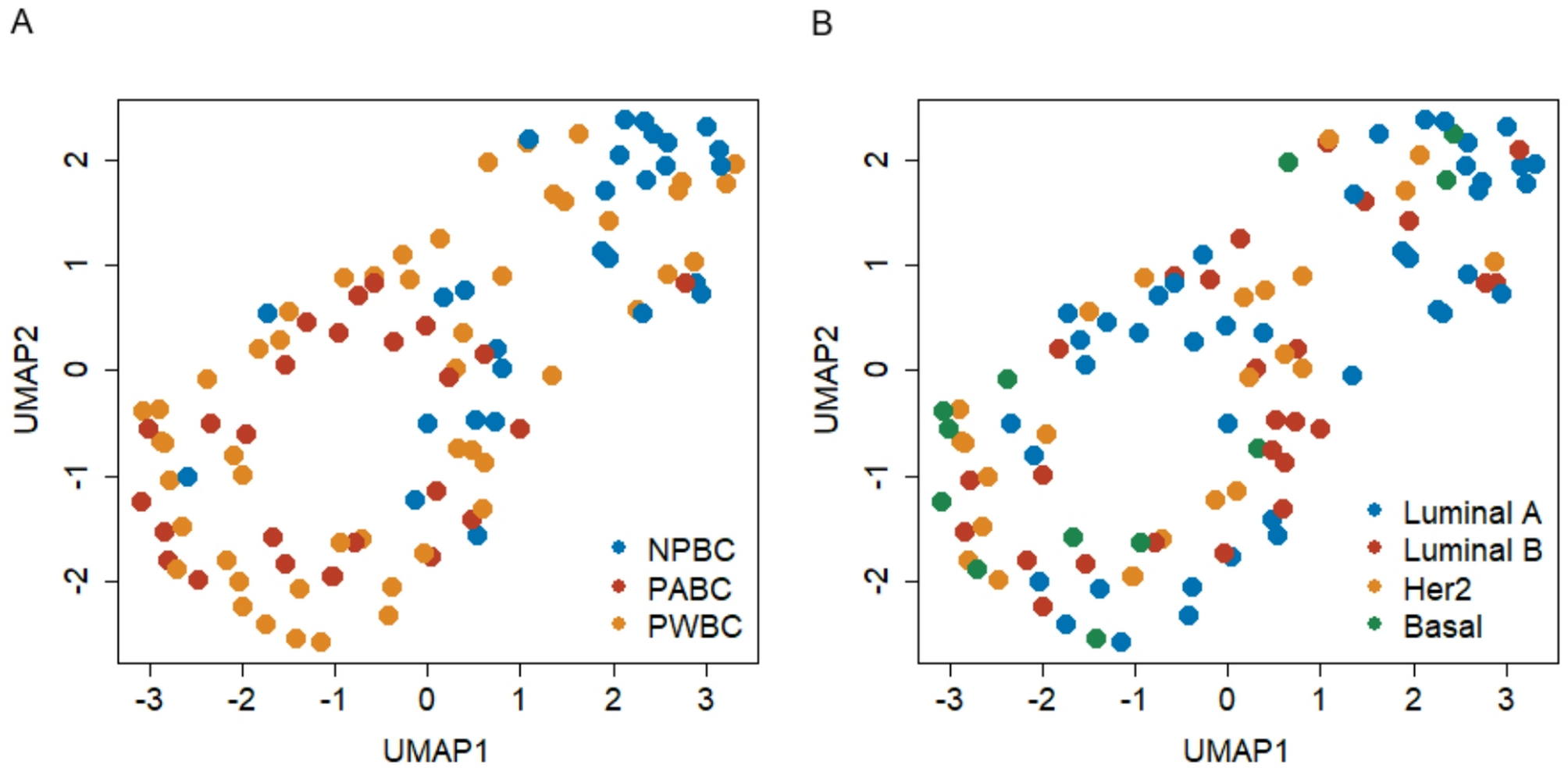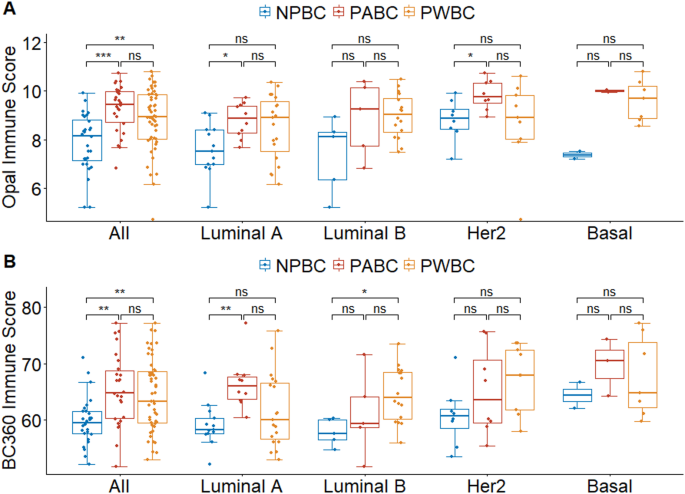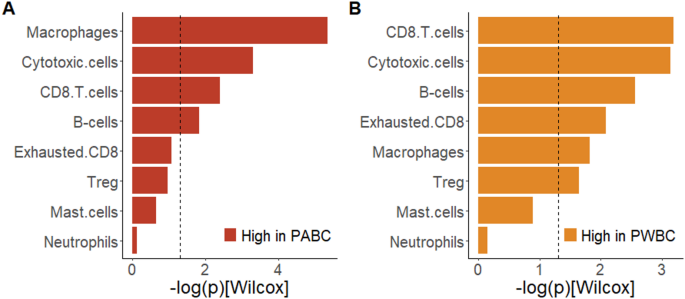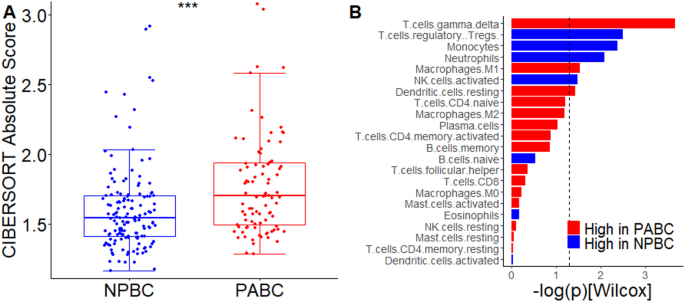- Engineer Muhammad Ali Mirza booked under blasphemy, cybercrime laws Samaa TV
- Engineer Muhammad Ali Mirza detained under MPO, also booked under blasphemy charges Dawn
- Pakistani Cleric Engineer Muhammad Ali Mirza Arrested Over Controversial Remarks | World News News18
- Engineer Muhammad Ali Mirza arrested in Jhelum under 3MPO The Nation (Pakistan )
- Blasphemy FIR lodged against Engineer Mirza as Punjab Police deny custody The Express Tribune
Author: admin
-
Engineer Muhammad Ali Mirza booked under blasphemy, cybercrime laws – Samaa TV
-

Investigation into Antimicrobial Resistance Profiles of Staphylococcus
Introduction
Chronic rhinosinusitis (CRS) is a common chronic inflammatory disease of the upper respiratory tract, primarily characterized by nasal congestion, excessive nasal discharge, headache, and loss of smell, which significantly disrupts patients’ daily life.1 It is estimated that approximately 12% of adults worldwide are affected by CRS, and the incidence rate continues to rise.2 Although most cases can be alleviated with routine treatments such as antibiotics and nasal corticosteroids, some patients experience prolonged disease courses and recurrent symptoms that are difficult to control, often necessitating surgical intervention.3 Furthermore, CRS not only affects patients’ quality of life but may also lead to complications such as chronic cough, pharyngitis, bronchitis, and even impair heart and lung functions.4 Therefore, the treatment and management of CRS have become significant challenges for clinicians. The development of CRS is associated with multiple factors, and bacterial infections are considered an important trigger.5
Staphylococcus aureus (S. aureus) is one of the most common pathogens in CRS, especially in patients with long-term recurrent symptoms.6 This bacterium has strong pathogenicity and produces various toxins that damage the nasal and sinus mucosal barriers, leading to localized inflammatory responses.7 Meanwhile, due to its frequent clinical occurrence, the issue of antibiotic resistance in S. aureus has gradually become prominent, particularly with the emergence of methicillin-resistant Staphylococcus aureus (MRSA). MRSA strains are resistant to multiple commonly used antibiotics, and their infections not only complicate treatment but also prolong the course of illness, potentially leading to severe complications such as sepsis and pneumonia, which severely impact prognosis.8,9 Moreover, due to their high resistance and limited treatment options, MRSA infections significantly increase medical costs, placing a heavy burden on patients and the healthcare system.
Previous studies10–12 have shown that MRSA infection may be related to several clinical factors, including gender, age, smoking history, disease duration, comorbidities, and the frequency and duration of antibiotic use. However, there is still a lack of systematic research on the specific factors influencing MRSA infection in CRS patients, particularly on how to effectively screen for and prevent MRSA infections.
Therefore, the present study retrospectively analyzed the clinical data of 180 CRS patients in our hospital, aiming to investigate the antibiotic resistance characteristics of S. aureus and to explore the influencing factors of MRSA infection, with the goal of providing valuable reference for clinical diagnosis, prevention, and treatment strategies.
Materials and Methods
Study Subjects
This retrospective analysis included 180 CRS patients admitted to our hospital between February 2022 and July 2024. Inclusion criteria: (1) Met the clinical diagnostic criteria for CRS;13 (2) Age ≥18 years, regardless of sex; (3) CRS history >6 months before admission, with recurrent acute exacerbations or chronic symptoms; (4) Nasal secretion samples collected for S. aureus isolation upon admission; (5) Provided written informed consent. Exclusion criteria: (1) Severe immune system diseases (eg, AIDS, immunosuppressive states), malignant tumors, severe heart disease, or liver/kidney dysfunction; (2) Acute sinusitis with a course <12 weeks or recent acute upper respiratory infection; (3) Received systemic antibiotic treatment within the past 6 months; (4) Pregnancy or lactation; (5) Voluntary withdrawal during the study.
Ethical Approval
This study was approved by the Medical Ethics Committee of the People’s Hospital Affiliated to Shandong First Medical University (Approval No.: EBK-GR240012), and was conducted in accordance with the Declaration of Helsinki.
MRSA Identification and Screening
Under nasal endoscopic visualization, sterile cotton swabs were used to collect sinus secretion samples, which were immediately placed in sterile containers and transported to the laboratory. Specimens were considered qualified when the number of squamous epithelial cells was <10 and the number of white blood cells was >25 under low magnification, or the ratio of squamous epithelial cells to white blood cells was <1:2.5. Bacterial identification was performed using the VITEK-2 automated microbiology system (BioMérieux, France). The Kirby–Bauer (K–B) disk diffusion method was used for susceptibility testing, with quality control strain S. aureus ATCC 25923 (National Health and Family Planning Commission Clinical Testing Center). According to the latest Clinical and Laboratory Standards Institute (CLSI) guidelines,14 strains resistant to oxacillin or cefoxitin were classified as MRSA, and the rest as methicillin-sensitive Staphylococcus aureus (MSSA).
Antibiotic Susceptibility Testing
Susceptibility testing was performed against the following antibiotic classes and agents, with concentrations (μg) indicated for each disk: β-lactams: Cefoxitin (FOX, 30 μg); Aminoglycosides: Amikacin (AK, 30 μg); Fluoroquinolones: Ciprofloxacin (CIP, 5 μg), Levofloxacin (LFX, 5 μg); Oxazolidinones: Linezolid (LIN, 30 μg); Lipopeptides: Daptomycin (DAP, 30 μg); Sulfonamides: Trimethoprim–sulfamethoxazole (SXT, 1.25/23.75 μg); Lincosamides: Clindamycin (CLI, 2 μg); Nitrofurans: Nitrofurantoin (NIT, 300 μg); Macrolides: Erythromycin (E, 15 μg); Rifamycins: Rifampicin (RIF, 5 μg); Glycopeptides: Teicoplanin (TEC, 30 μg), Vancomycin (VA, 30 μg); Tetracyclines: Tetracycline (TE, 30 μg). According to the latest CLSI guidelines.
Analysis of Factors Influencing MRSA Infection
Potential risk factors included sex, age, BMI, disease duration, comorbidities, smoking status, nasal polyps, history of intranasal corticosteroid use, previous nasal surgery, Lund–Kennedy score,15 frequency/duration of acute infections, nasal septum deviation, allergic rhinitis, frequency/duration of antibiotic use, gastroesophageal reflux, drainage obstruction, combined antibiotic therapy, and serum albumin (ALB) levels. Significant factors in univariate analysis were entered into multivariate logistic regression.
Statistical Analysis
Statistical analyses were performed with SPSS 25.0. Categorical data were expressed as n (%) and analyzed using the chi-square (χ²) test. Continuous variables were expressed as () and compared using the independent-sample t-test. A two-sided P-value <0.05 was considered statistically significant. Graphs were generated using GraphPad Prism 8.
Results
Demographic and Clinical Characteristics
A total of 180 patients with chronic rhinosinusitis were included in this study, comprising 116 males (64.44%) and 64 females (35.56%), with a mean age of 45.20 ± 11.49 years and a mean BMI of 22.32 ± 2.27 kg/m².
Antibiotic Susceptibility Test Results
Among the 180 S. aureus isolates, 74 strains were identified as MRSA and 106 strains as MSSA. The antibiotic resistance profiles are presented in Tables 1 and 2. As shown in Table 1, MRSA exhibited markedly higher resistance rates to FOX, AK, CIP, LFX, CLI, E, RIF, and TE compared with MSSA, and the differences were statistically significant (P < 0.05). No resistance was observed to LIN, TEC, or VA in either group.

Table 1 Antibiotic Susceptibility Results of S. aureus Isolates [n (%)]

Table 2 Comparative Resistance Patterns Between MRSA and MSSA
Univariate Analysis of Factors Influencing MRSA Infection
The results of the univariate analysis showed that, in the MRSA group, male gender, CRS duration >5 years, smoking, allergic rhinitis, nasal structural abnormalities, history of nasal surgery, poor drainage, frequency of acute infections >3 times/year, frequency of recurrent upper respiratory tract infections >3 times/year, frequency of antibiotic use ≥3 times/year, antibiotic use duration >14 days, and use of ≥3 combined antibiotics had statistically significant differences compared with the MSSA group (P<0.05), as shown in Table 3.

Table 3 Univariate Analysis of Factors Influencing MRSA Infection (
 , n[%])
, n[%])Multivariate Logistic Regression Analysis of MRSA Infection Factors
Taking whether CRS patients have MRSA infection as the dependent variable (0 = absent, 1 = present), and assigning values to the possible influencing factors obtained from Table 2 as independent variables (see Table 4), a multivariate logistic regression analysis model was established. The results showed that male gender, nasal structural variations, history of nasal surgery, poor drainage, frequency of acute infections >3 times/year, frequency of recurrent upper respiratory infections >3 times/year, antibiotic use frequency ≥3 times/year, antibiotic use duration >14 days, and use of ≥3 antibiotics were all independent risk factors for MRSA infection in CRS patients (P < 0.05), as shown in Table 5.

Table 4 Variable Assignment Table

Table 5 Multivariate Logistic Regression Analysis of Factors Affecting MRSA Infection
Discussion
MRSA, with its powerful resistance and rapid transmission capabilities, poses a severe challenge to the treatment of CRS.16 Among the 180 CRS patients analyzed in this study, the incidence of MRSA was 41.11%, which is slightly higher than previous related studies.17,18 This finding highlights the significance of MRSA in CRS patients, especially in the context of increasing antibiotic resistance, suggesting the need for more in-depth research and effective prevention and control measures. The study also showed that, compared with other antibiotics, S. aureus demonstrated significant resistance to macrolide antibiotics (erythromycin E), with a resistance rate of 65.56%, which further increased to 81.08% in MRSA strains. This phenomenon might be related to the frequent application of macrolide antibiotics in treating CRS. Macrolides not only inhibit sinus infections but also help by suppressing bacterial biofilm formation and reducing inflammatory responses, leading to their widespread use.19,20 Therefore, prolonged use may exert selective pressure and accelerate the emergence of resistant strains. In addition, this study also revealed the issue of MRSA’s resistance to multiple antibiotics. The resistance rates of FOX, CIP, CLI, and TE exceeded 40%. These high resistance rates reflect the considerable difficulties CRS patients face during treatment and indicate that drug sensitivity testing should be emphasized during clinical treatment to ensure the rationality and effectiveness of medication and reduce the further spread of resistance. At the same time, strengthening hospital infection control is particularly important, in addition to antimicrobial therapy for MRSA infections. Medical staff should strictly adhere to sterile procedures, regularly provide hand hygiene education and training, and use antimicrobial-functional medical gloves, among other measures, to reduce the risk of MRSA transmission.21 Additionally, strict monitoring of antibiotic usage in patients is necessary to avoid overuse of antibiotics, which is crucial for reducing the formation and spread of resistant bacteria.
This study used univariate and multivariate analyses to explore the impact of various factors on MRSA infection in CRS patients. The results show that male CRS patients are more likely to be infected with MRSA than females, a finding consistent with existing literature.22,23 Male patients typically have higher risk factors in terms of lifestyle, such as smoking, alcohol use, and occupational exposure, which may lead to reduced immune function and damage to the nasal barrier, making them more susceptible to resistant bacterial infections.24 Furthermore, male patients tend to seek medical attention later in the disease course, leading to delayed treatment, which is a major factor in the development of resistance. Since male CRS patients are more prone to MRSA infections, early intervention and close monitoring of male patients in clinical practice should be emphasized, particularly regarding antibiotic use, which should be rational and precise. Nasal structural variations, such as septal deviation, nasal polyps, and other nasal anatomical abnormalities, have been shown to be closely associated with MRSA infection.25 Nasal structural abnormalities lead to poor sinus drainage, creating a local environment conducive to the growth of pathogens, especially highly resistant bacteria like MRSA, which can thrive in such environments and form biofilms,26 increasing the persistence of infections and treatment difficulty. A history of nasal surgery (eg, sinus surgery, polypectomy) is also an important risk factor. While surgery may improve structural problems, it can also cause local tissue damage, alter the nasal immune barrier, and further promote bacterial colonization and the growth of resistant bacteria.27 For CRS patients with nasal structural variations or a history of surgery, clinical treatment should be more individualized, considering long-term antibiotic prophylaxis and nasal care measures to prevent bacterial colonization after surgery. The results of this study indicate that the frequency of acute infections in CRS patients is significantly related to the risk of MRSA infection. MRSA infection rates were significantly higher in patients with frequent acute infections and recurrent upper respiratory infections. This may be due to repeated infections leading to prolonged inflammation of the nasal and sinus mucosa, and a decline in immune function, especially during acute exacerbations, creating a local environment more favorable for the growth of resistant bacteria like MRSA.28 Additionally, frequent acute infections are often accompanied by antibiotic use, and inappropriate or excessive use of antibiotics is a major factor in the development of resistant bacteria.29,30 Therefore, long-term management of CRS patients should be strengthened in clinical practice, with appropriate scheduling of antibiotic use, avoiding overuse of antibiotics, and emphasizing patients’ and families’ awareness of auxiliary treatments, such as nasal cleaning and humidification. Moreover, this study also found that MRSA infection risk was significantly increased in patients with antibiotic use ≥3 times/year, antibiotic use duration >14 days, and those using ≥3 types of antibiotics in combination. This may be because excessive use of antibiotics can disrupt the normal nasal flora, allowing resistant strains to replace it. Furthermore, the combined use of multiple antibiotics is often due to ineffective infection control, and although combining antibiotics can temporarily control bacterial growth, it significantly increases the selective pressure on resistant bacteria.31,32 In light of this, clinical treatment should avoid unnecessary antibiotics and strictly select the most appropriate antibiotics based on bacterial culture and sensitivity test results. For patients with known resistant strains, broad-spectrum antibiotics should be avoided, and MRSA-targeted drugs should be chosen for treatment.
Based on the findings of this study, we recommend the following measures in the treatment of CRS: (1) Strengthening microbiological testing and antibiotic susceptibility analysis: For all recurrent CRS patients, especially those with high-risk factors, routine nasal secretion cultures and sensitivity tests should be conducted to understand the types of pathogens and their resistance patterns, guiding clinical treatment. (2) Optimizing antibiotic use strategies: Clinically, rational antibiotic use policies should be formulated to avoid overuse. For patients with MRSA infections, targeted antibiotics such as vancomycin or linezolid should be selected based on sensitivity results. For patients without clear evidence of infection, antibiotic treatment should be avoided whenever possible. (3) Strengthening patient management: For patients with nasal structural variations, frequent acute infection histories, and a long history of antibiotic use, regular follow-up and management should be strengthened. The disease status should be periodically evaluated, and treatment plans should be adjusted. When necessary, surgical treatment to improve nasal ventilation and drainage function should be considered. (4) Advocating for rational antibiotic use education: Not only should healthcare professionals strengthen education on rational antibiotic use, but patients and their family members also need to improve their awareness of antibiotic use. Avoiding self-medication with antibiotics or misuse in non-medical institutions is key to reducing the emergence of resistant bacteria.
Conclusion
MRSA has a high infection rate in CRS patients and exhibits significant resistance to several commonly used antibiotics. Factors such as gender, nasal structural variations, nasal surgery history, frequent acute infections, and inappropriate antibiotic use are independent risk factors for MRSA infection. Based on these findings, clinical treatment should emphasize microbiological testing, rational use of antibiotics, and the optimization of long-term patient management to improve CRS treatment outcomes and reduce MRSA infections. Future research could delve deeper into the molecular mechanisms of MRSA infections to further understand the development process of its resistance. Furthermore, larger prospective studies should be conducted to evaluate the efficacy of different antibiotic treatment strategies in CRS patients, in order to provide more precise clinical treatment guidelines.
Disclosure
The authors report no conflicts of interest in this work.
References
1. Wang CS, Wang XD, Zhang L. Effectiveness and safety of biologics in patients with chronic rhinosinusitis with nasal polyps. Zhonghua Er Bi Yan Hou Tou Jing Wai Ke Za Zhi. 2024;59(10):1002–1012. doi:10.3760/cma.j.cn115330-20240322-00160
2. Hao Y, Cui LM, Yang YJ, et al. Progress of multi-omics technology in precision treatment of chronic rhinosinusitis. Zhonghua Er Bi Yan Hou Tou Jing Wai Ke Za Zhi. 2024;59(8):872–878. doi:10.3760/cma.j.cn115330-20240131-00073
3. Zhong B, Hao ZZ, Liu XC, et al. Effect of middle turbinectomy on prognosis of chronic rhinosinusitis. Zhonghua Er Bi Yan Hou Tou Jing Wai Ke Za Zhi. 2024;59(10):1102–1106. doi:10.3760/cma.j.cn115330-20240104-00013
4. Sha JC, Zhu DD. Advances in microbiome and chronic rhinosinusitis. Zhonghua Er Bi Yan Hou Tou Jing Wai Ke Za Zhi. 2024;59(6):649–653. doi:10.3760/cma.j.cn115330-20240131-00067
5. Liang YW, Lu T, Li ZQ, et al. Regional differences of chronic rhinosinusitis endotypes based on tissue inflammatory and remodeling biomarkers. Zhonghua Er Bi Yan Hou Tou Jing Wai Ke Za Zhi. 2024;59(6):573–581. doi:10.3760/cma.j.cn115330-20240201-00074
6. Chen XY, Ju JB, Zhao H, et al. Advances in the study of staphylococcus aureus in allergic rhinitis and chronic rhinosinusitis with nasal polyps. Zhonghua Er Bi Yan Hou Tou Jing Wai Ke Za Zhi. 2021;56(3):301–306. doi:10.3760/cma.j.cn115330-20200520-00429
7. Poddighe D, Vangelista L. Staphylococcus aureus infection and persistence in chronic rhinosinusitis: focus on leukocidin ED. Toxins. 2020;12(11):678. doi:10.3390/toxins12110678
8. Feizi S, Cooksley CM, Nepal R, et al. Silver nanoparticles as a bioadjuvant of antibiotics against biofilm-mediated infections with methicillin-resistant staphylococcus aureus and pseudomonas aeruginosa in chronic rhinosinusitis patients. Pathology. 2022;54(4):453–459. doi:10.1016/j.pathol.2021.08.014
9. Menberu MA, Liu S, Cooksley C, et al. Corynebacterium accolens has antimicrobial activity against staphylococcus aureus and methicillin-resistant s. aureus pathogens isolated from the sinonasal niche of chronic rhinosinusitis patients. Pathogens. 2021;10(2):207. doi:10.3390/pathogens10020207
10. Ferradas C, Cotter C, Shahbazian JH, et al. Risk factors for antimicrobial resistance among Staphylococcus isolated from pets living with a patient diagnosed with methicillin-resistant Staphylococcus aureus infection. Zoonoses Public Health. 2022;69(5):550–559. doi:10.1111/zph.12946
11. Holten Møller C, Andersson M, Rhod Larsen A, et al. Risk of hospitalization and death within 2 years after methicillin-resistant Staphylococcus aureus (MRSA) diagnosis in persons colonized or infected with livestock and non–livestock-associated MRSA—A nationwide register-based cohort study. Zoonoses Public Health. 2020;67(7):814–822. doi:10.1111/zph.12765
12. Chen TY, Ge YL, Liu XW, et al. Molecular epidemiological characteristics of methicillin-resistant staphylococcus aureus during 2017-2018 at a hospital in Shanghai. Zhonghua Yu Fang Yi Xue Za Zhi. 2020;54(8):849–853. doi:10.3760/cma.j.cn112150-20190819-00669
13. Hellings PW, Fokkens WJ, Orlandi R, et al. The EUFOREA pocket guide for chronic rhinosinusitis. Rhinology. 2023;61(1):85–89. doi:10.4193/Rhin22.344
14. Salian PS, Sheth D, Bari AK, Poojary A, Rohra S, M R. Comparison of rapid antimicrobial susceptibility testing of flash positive blood culture bottles using disk diffusion and automated broth microdilution on VITEK 2 compact with standard methods: Clinical Laboratory Standards Institute (CLSI) protocol. Indian J Med Microbiol. 2025;54:100809. doi:10.1016/j.ijmmb.2025.100809
15. Huang X, Zhou JB, Xiao XP, et al. Application and exploration of small dose omalizumab in patients with recurrent eosinophilic sinusitis after extended sinus surgery. Zhonghua Er Bi Yan Hou Tou Jing Wai Ke Za Zhi. 2023;58(8):747–753. doi:10.3760/cma.j.cn115330-20220923-00578
16. Adelman AE, Tangutur A, Archilla AS, et al. Microbiological profiles and patterns of resistance in patients with sinus infections after endoscopic sinus surgery. Otolaryngol Head Neck Surg. 2025;172(4):1442–1449. doi:10.1002/ohn.1122
17. Zhuo CY, Guo YY, Liu NJ, et al. Epidemiological analysis of pathogens causing bloodstream infections in department of hematology in Guangdong province. Zhonghua Xue Ye Xue Za Zhi. 2020;41(12):996–1001. doi:10.3760/cma.j.issn.0253-2727.2020.12.005
18. Wu X, Yu H, He LY, et al. A multicentric study on clinical characteristics and antibiotic sensitivity in children with methicillin-resistant staphylococcus aureus infection. Zhonghua Er Ke Za Zhi. 2020;58(8):628–634. doi:10.3760/cma.j.cn112140-20200505-00469
19. Siu J, Klingler L, Wang Y, et al. Oral antibiotics used in the treatment of chronic rhinosinusitis have limited penetration into the sinonasal mucosa: a randomized trial. Xenobiotica. 2020;50(12):1443–1450. doi:10.1080/00498254.2020.1814973
20. Philpott C, le Conte S, Beard D, et al. Clarithromycin and endoscopic sinus surgery for adults with chronic rhinosinusitis with and without nasal polyps: study protocol for the MACRO randomised controlled trial. Trials. 2019;20(1):246. doi:10.1186/s13063-019-3314-7
21. Tian BS, Ling Y, Lyu JW, et al. A retrospective analysis of clinical characteristics and prognostic factors for 152 cases of Staphylococcus aureus bloodstream infection. Zhonghua Yu Fang Yi Xue Za Zhi. 2023;57(2):241–246. doi:10.3760/cma.j.cn112150-20220221-00161
22. Shaghayegh G, Cooksley C, Bouras G, et al. S. aureus biofilm metabolic activity correlates positively with patients’ eosinophil frequencies and disease severity in chronic rhinosinusitis. Microbes Infect. 2023;25(8):105213. doi:10.1016/j.micinf.2023.105213
23. Li SG, Liao K, Su DH, et al. Analysis of pathogen spectrum and antimicrobial resistance of pathogens associated with hospital-acquired infections collected from 11 teaching hospitals in 2018. Zhonghua Yi Xue Za Zhi. 2020;100(47):3775–3783. doi:10.3760/cma.j.cn112137-20200430-01389
24. Eisner R, Lippmann N, Josten C, et al. Development of the bacterial spectrum and antimicrobial resistance in surgical site infections of trauma patients. Surg Infect. 2020;21(8):684–693. doi:10.1089/sur.2019.158
25. Huang Y, Qin F, Li S, et al. The mechanisms of biofilm antibiotic resistance in chronic rhinosinusitis: a review. Medicine. 2022;101(49):e32168. doi:10.1097/MD.0000000000032168
26. Li YT, Huang -S-S, Ma J-H, et al. Bacteriology of different phenotypes of chronic rhinosinusitis. Laryngoscope. 2024;134(3):1071–1076. doi:10.1002/lary.30905
27. Gupta N, Ahmed A, Galib R, et al. A prospective clinical study of bacteriological profile and their antibiotic susceptibilty profile in patients with chronic rhinosinusitis: the recent scenario in Northern India. Indian J Otolaryngol Head Neck Surg. 2024;76(1):658–663. doi:10.1007/s12070-023-04242-x
28. Singh R, Shilpa R, Mukhopadhyay C, et al. Correlation between microbiological profiles of adenoid tissue and nasal discharge in children with co-existent chronic adenoiditis and Chronic Rhinosinusitis. Indian J Otolaryngol Head Neck Surg. 2020;72(1):112–116. doi:10.1007/s12070-019-01775-y
29. López-Pérez M and Herrera-Zúñiga L. Advancing adjuvant treatment for bacterial sepsis: exploring anti-biofilm compounds and efflux pump inhibitors. Innov Discov. 2025;2(2). doi:10.53964/id.2025009), 9.
30. Cherian LM, Cooksley C, Richter K, et al. Effect of commercial nasal steroid preparation on bacterial growth. Int Forum Allergy Rhinol. 2019;9(7):766–775. doi:10.1002/alr.22312
31. Liu S, Zhao Y, Hayes A, et al. Overcoming bacteriophage insensitivity in staphylococcus aureus using clindamycin and azithromycinat subinhibitory concentrations. Allergy. 2021;76(11):3446–3458. doi:10.1111/all.14883
32. Łusiak-Szelachowska M, Weber-Dąbrowska B, Żaczek M, et al. Anti-biofilm activity of bacteriophages and lysins in chronic rhinosinusitis. Acta Virol. 2021;65(2):127–140. doi:10.4149/av_2021_203
Continue Reading
-

Characterization of the tumor immune microenvironment in pregnancy-associated breast cancer through multiplex immunohistochemistry and transcriptome analyses | Breast Cancer Research
Characteristics of study population
Table 1 presents a summary of the demographic and clinical characteristics of the study population. The mean age at breast cancer diagnosis was 38.0 years in the NPBC group, 35.0 years in the PABC group, and 42.2 years in the PWBC group (p < 0.001). The age difference between groups was primarily attributable to the PWBC group, which was significantly older than both the NPBC (p = 0.04) and PABC (p < 0.001) groups in pairwise comparisons. However, no significant difference in patient age was observed between the NPBC and the PABC groups (p = 0.22). Regarding disease stage, 31 patients (29.5%) had stage I, 49 (46.7%) had stage II, and 35 (33.3%) had stage III breast cancer. Molecular subtyping by PAM50 classification revealed 12 basal-like, 25 HER2-enriched, 26 luminal B, and 42 luminal A tumors. No significant differences in disease stage (p = 0.156) or molecular subtype (p = 0.636) were observed among the NPBC, PABC, and PWBC groups.
Table 1 Patient characteristics Uniform manifold approximation and projection of immune cell profiles
Uniform manifold approximation and projection (UMAP) was employed to visualize differences in immune cell composition across the study groups based on data derived from both multiplex IHC and transcriptomic analyses. The immune cell distribution patterns in PABC cases closely resembled those observed in the PWBC group (p = 0.261, Fig. 1A). However, significant differences were observed between the PABC and NPBC groups (p = 0.003) and between the PWBC and NPBC groups (p = 0.006). UMAP analysis stratified by PAM50 molecular subtypes revealed no evident differences in immune cell distribution, except for a significant distinction between the luminal A and basal-like subtypes (p = 0.006, Fig. 1B). Further subgroup analysis of immune cell composition within each molecular subtype revealed a significant difference between the PABC and NPBC groups within the luminal A subtype (Supplementary Fig. 1). These findings suggest that pregnancy or lactation may modulate the tumor immune microenvironment, particularly in the luminal A subtype of breast cancer.
Fig. 1 Uniform manifold approximation and projection (UMAP) of immune cell profiles on basis of multiplex IHC and transcriptomic data. Grouped by (A) NPBC, PABC, and PWBC, and (B) PAM50 subtyping
Immune scores of breast tumors by pregnancy subgroups
Multiplex IHC staining revealed significant differences in Opal immune scores across the NPBC, PABC, and PWBC groups (p < 0.001, Fig. 2A). Across all molecular subtypes, tumors in the PABC group had the highest immune scores. In contrast, those in the NPBC group had the lowest. The immune scores were significantly higher in the PABC (p < 0.001) and PWBC (p = 0.003) groups than in the NPBC group. A subtype-specific analysis further indicated that PABC tumors were associated with significantly higher immune scores than NPBC tumors were in the luminal A (p = 0.019) and HER2-enriched (p = 0.044, Fig. 2A) subtypes. However, the difference in immune scores between the PWBC and NPBC groups did not reach statistical significance in the subtype-specific analysis, a finding potentially attributed to the limited sample size.
Fig. 2 
Comparisons of immune scores among subgroups in (A) multiplex IHC and (B) transcriptome analyses. * p < 0.05, ** p < 0.01, *** p < 0.001, ns non-significant, group difference accessed with Kruskal-Wallis test
In the transcriptomic analysis, BC360 immune scores significantly differed among the NPBC, PABC, and PWBC groups (p < 0.001, Fig. 2B). Across all molecular subtypes, tumors in the PABC group exhibited the highest immune scores. In contrast, those in the NPBC group had the lowest. The BC360 immune scores were significantly higher in the PABC (p = 0.011) and PWBC (p = 0.002) groups than in the NPBC group. The subtype-specific analysis further revealed that PABC tumors were associated with significantly higher BC360 immune scores than NPBC tumors were in the luminal A subtype (p = 0.001). Additionally, PWBC tumors were associated with significantly higher BC360 immune scores than NPBC tumors were in the luminal B subtype (p = 0.033).
Immune cell composition of breast tumors by pregnancy subgroups
Multiplex IHC analysis revealed that compared with the NPBC subgroup, the PABC subgroup exhibited significantly higher densities of CD4+ T cells, CD8+ T cells, CD20+ B cells, and CD68+/CD163+ M2 cells (Fig. 3A–C, E). The CD20+ B cells density was greater in PABC than PWBC. By contrast, the density of CD68+ cells did not significantly differ among the three subgroups (Fig. 3D). The subtype-specific analysis further revealed that compared with NPBC tumors, PABC tumors exhibited increased densities of CD4⁺, CD8⁺, CD20⁺, and CD68⁺/CD163⁺ macrophages in the luminal A subtype; increased densities of CD68⁺/CD163⁺ macrophages in the luminal B subtype; and increased densities of CD8⁺ T cells and CD20⁺ B cells in the HER2-enriched subtype (Supplementary Fig. 2). Additionally, tumors from the PWBC subgroup exhibited higher densities of CD20⁺ B cells and CD68⁺/CD163⁺ macrophages in patients with the luminal A subtype and elevated CD4⁺ T cell densities in patients with the luminal B subtype compared with NPBC tumors (Supplementary Fig. 2). In the luminal B subtype, the density of CD68⁺/CD163⁺ M2 macrophages was higher in PABC compared to PWBC. The spatial colocalization of immune cells and tumor cells is presented in Supplementary Fig. 3. No significant differences in NSInC indices were observed among the NPBC, PABC, and PWBC groups, suggesting that immune–tumor cell colocalization is not influenced by pregnancy status.
Fig. 3 
Multiplex IHC immune cell of densities of (A) CD4 + T cells, (B) CD8 + T cells, (C) CD20 + B cells, (D) CD68 + cell and (E) CD68+/CD163 + M2 cells. * p < 0.05, ** p < 0.01, *** p < 0.001, ns non-significant, group difference accessed with Kruskal-Wallis test
Immune cell signatures derived from the BC360 transcriptomic analysis revealed that the PABC subgroup exhibited higher signatures for macrophages, cytotoxic cells, CD8 T cells, and B cells compared with the NPBC subgroup (Fig. 4A, Supplementary Table 1). Additionally, the PWBC subgroup exhibited higher signatures for cytotoxic cells, CD8 T cells, B cells, exhausted CD8 T cells, macrophages, and regulatory T cells relative to the NPBC subgroup (Fig. 4B, Supplementary Table 1). The macrophage signature was statistically higher in PABC than PWBC (Supplementary Table 1). A transcriptomic analysis stratified by molecular subtype further revealed that compared with the NPBC subgroup, the PABC subgroup exhibited higher signatures for B cells, CD8 T cells, cytotoxic cells, macrophages, and mast cells in the luminal A subtype and a higher macrophage signature in the luminal B and HER2-enriched subtypes. Additionally, compared with the NPBC subgroup, the PWBC subgroup exhibited higher signatures for cytotoxic cells, macrophages, exhausted CD8 T cells, CD8 T cells, and B cells in the luminal B subtype as well as for regulatory T cells, macrophages, and B cells in the HER2-enriched subtype (Supplementary Fig. 4, Supplementary Table 2). The macrophage and mast cell signatures were statistically higher in PABC than PWBC in luminal A subtype (Supplementary Table 2).
Fig. 4 
Transcriptomic immune cell signature difference between (A) PABC and NPBC, and between (B) PWBC and NPBC subgroups. Dotted line indicates p value = 0.05
Collectively, the findings from the multiplex IHC and transcriptomic analyses indicated a significant increase in B cells, CD8 T cells, and macrophages in the PABC subgroup compared with the NPBC subgroup.
Validation of immune cell composition by pregnancy subgroup using GEO datasets
A comprehensive search of the GEO database for human expression array data was conducted using the keywords “breast cancer” and “pregnancy,” yielding 22 datasets. After a review of the dataset descriptions, the datasets of 10 studies were excluded because of an absence of pregnancy status information, along with other 3 studies on normal breast tissue, 2 involving cell lines, 1 on post-radiational angiosarcoma, and 1 on ulcerative colitis that contained a duplicated dataset. Additionally, a duplicate entry was identified between dataset GDS4766 and series GSE31192. Three datasets—GSE31192, GSE53031, and GSE112825—were selected for validation. Datasets GSE31192 and GSE112825 were analyzed using the Affymetrix Human Genome U133 Plus 2.0 Array, whereas the GSE53031 dataset was analyzed using the Affymetrix Human Genome U219 Array. In the GSE31192 dataset, PABC was defined as breast cancer diagnosed during pregnancy or within 1 year postpartum, whereas nulliparous women or patients with breast cancer diagnosed 5 years postpartum were categorized into the NPBC group. Only tumor tissue data were included in this validation analysis. Breast cancer cases diagnosed during pregnancy were categorized as PABC, and two age-matched controls were selected for each PABC case from the GSE53031 dataset. Dataset GSE112825 provided the time interval between breast cancer diagnosis and pregnancy, with a 5-year threshold applied to designate PABC status. In total, 93 PABC and 143 NPBC cases were included in the validation cohort. Molecular subtyping revealed a slightly higher proportion of basal-like subtype tumors in the PABC group (Supplementary Table 3).
CIBERSORT analysis demonstrated significantly higher absolute immune scores in patients with PABC than in those with NPBC (p < 0.001, Fig. 5A). The difference could also be found in luminal A, luminal B and basal-like subtypes (Supplementary Fig. 5). Immune cell profiling further revealed that PABC was associated with increased signatures for gamma-delta T cells, M0 macrophages, and resting dendritic cells, whereas signatures for regulatory T cells, monocytes, neutrophils, and activated natural killer cells were decreased (Fig. 5B). The subtype-specific analysis was shown in supplementary Fig. 6. These findings are consistent with results from our study, which indicate that immune cell aggregation occurs during pregnancy but the adaptation of immune cell subsets varies across molecular subtypes.
Fig. 5 
CIBERSORT imputation result of external gene expression datasets in (A) immune score and (B) immune cell signatures. *** p < 0.001, group difference accessed with Wilcoxon rank sum test
Survival impact of tumor immune microenvironment across pregnancy subgroups
The five-year recurrence-free survival (RFS) rate in our cohort was 90.4%. No significant RFS differences were observed among patients with NPBC, PABC, or PWBC (p = 0.82; Supplementary Fig. 7A). To assess the prognostic relevance of the immune microenvironment, patients were stratified into high and low immune activity groups based on the median values of immune scores, cell densities, or cell-specific transcriptomic signatures. Log-rank tests showed no significant differences in RFS between patients with high vs. low Opal immune scores (p = 0.95) or BC360 immune scores (p = 0.50; Supplementary Fig. 7B & C). Univariate Cox regression analyses further confirmed that neither IHC-defined immune cell populations nor transcriptomic immune cell signatures were significantly associated with RFS (Supplementary Table 4).
To investigate the impact of immune cell-tumor colocalization, patients with positive NSInC index were compared to those with zero or negative NSInC index. While not reaching statistical significance, higher colocalization between CD4 + or CD8 + T cells and tumor cells showed trends toward improved RFS (p = 0.064 and p = 0.071, respectively; Supplementary Table 5).
Continue Reading
-
PDMA warns of high flood in Chenab, Ravi, Sutlej in 48 hours – RADIO PAKISTAN
- PDMA warns of high flood in Chenab, Ravi, Sutlej in 48 hours RADIO PAKISTAN
- Pakistan evacuates thousands as India releases water from swollen rivers Al Jazeera
- Nearly 150,000 relocated across Punjab ahead of flood warnings: NDMA Dawn
- Pakistan objects to India bypassing IWT on floods The Express Tribune
- Ravi and Sutlej rivers in high flood after India releases water Aaj English TV
Continue Reading
-

lessons from the Madagascar Oil restructuring plan, Nicholas Cooper, Katharina Crinson, Nick Fortune
The High Court sanctioned Madagascar Oil Limited’s restructuring plan, exercising cross class cram down. The judgment deals with a few now familiar points: what is the relevant alternative? Can it be a different deal? As well as touching on a few novel ones in an unusual two class only plan: was there in fact an in the money class enabling cross class cram down? Almost a third of the judgment is devoted to international recognition and effectiveness of the plan in Madagascar and Mauritius, an unusually detailed analysis, but required here given the specific facts of the case. However, a striking feature of this case is that the pari claims of two creditors were given different treatment under the plan and one of those creditor’s claims (actually, the shareholder) were used to cram the other creditor’s claims.
Background: two creditors and one oilfield
Madagascar Oil Limited (MOL) is a Mauritian-registered intermediate holding company for a mothballed oilfield in Madagascar, beset by technical challenges, a chequered history of failed capital-raising and mounting debt. Madagascar Oil S.A. (MOSA) is the main trading company within the group and is registered and headquartered in Madagascar. MOSA is the operating oil company holding the group’s core asset—the production sharing agreement with the Madagascan government for the large onshore oilfield.
MOL has two main creditors: BMK Resources Ltd (the 100% shareholder and sponsor, and now principal funder) and Outrider Master Fund LP (holding much of the external debt, and in voluntary liquidation in the Cayman Islands) (Outrider).
The restructuring plan
The plan sought to restructure MOL’s indebtedness (and MOSA’s related guarantee) and included the injection of additional shareholder equity to be used to restart production at the mothballed Madagascan oilfield.
The plan proposed two creditor classes only: (i) BMK (in support of the plan) and (ii) Outrider (challenging the plan). BMK would write off or subordinate substantial claims and inject US$7.5m (with a further uncommitted US$12.5m) of new money to fund the business (at 20% interest rate, with mandatory prepayment from excess cashflows and quarterly capitalisation of interest). Outrider could take either:
- an upfront US$200,000 cash payment, or
- a time-limited (12-year, US$1.45m aggregate cap) 1.25% revenue share in MOSA’s net sales, plus an “anti-embarrassment” provision: 19% of exit proceeds on any change of control within three years.
In exchange for the above consideration offered to Outrider, its debt (circa USD 71m against each of MOL and MOSA) would be wiped out entirely, while BMK would retain its sole shareholding and a USD 600m intercompany claim against MOSA]. The differential between treatment of the two classes was described by the judge as “stark”.
The two creditor classes argued extensively as to what the correct relevant alternative should be. The only common ground was that absent the plan sanction, MOL would enter into liquidation. The issue in question was what would then happen.
The plan company argued that BMK would likely purchase the MOSA shares from the liquidators, yielding only minimal recoveries for Outrider. Outrider on the other hand argued multiple and shifting alternatives, including that it could itself purchase the shares, or alternatively force MOSA into liquidation, potentially leading to a fundamentally different result. In support of its contention, Outrider made an offer to purchase MOL’s shares in MOSA for US$700,000, the offer being made on an open basis to demonstrate its fixed and settled intention to acquire MOSA. If the offer was not accepted, it was intended to make “the same or substantially the same offer to the joint liquidators of [MOL] if [MOL] enters liquidation”.
Cross class cram down: Condition A (“No Worse Off”)
Outrider vigorously challenged the proposed plan – arguing that Condition A (the “no worse off test”) for cross class cram down was not met. The court ultimately sided with the plan company, subjecting the different relevant alternatives put forward by Outrider to rigours scrutiny and concluding that none of its alternatives were viable. The court emphasised that, on the evidence, Outrider’s alternatives remained vague, lacked credible funding assurances and were not the “most likely” outcomes: “Accordingly, the scenarios posited by Outrider at the Sanction Hearing appear to reflect either an aspirational investment, or a high stakes, but self-harming, strategy. Neither is, in my view, a likely RA, let alone the most likely.” The court highlighted Outrider’s inability to settle on a single relevant alternative and stick to it damaged the credibility of its challenge.
The Court therefore concluded that the plan company’s relevant alternative, a BKM purchase of the MOSA shares was the most likely. Outrider would receive only de minimis recoveries (sub-$5k liquidation dividend). The plan, by contrast, guaranteed Outrider a better outcome, whether by upfront payment or capped revenue share.
Cross class cram down: Condition B (Approval by in the money class)
Condition B requires that the plan has been agreed in the required majority of 75% by at least one class who has a genuine economic interest in the company, in the event of the relevant alternative. BKM was the only assenting class. The question was therefore whether BKM had a genuine economic interest in MOL.
Outrider argued that this was not the case because in its proposed relevant alternative (namely, a MOSA liquidation), BMK would not be in the money because the MOSA shares would have lost their value and as a result, BMK would be left with no recoverable value for its claims and would not receive any payment, therefore not be “in the money”.
Given that the court sided with the company’s relevant alternative (over the one put forward by Outrider) it did not need to address this challenge, and made clear that BMK would be “in the money” in the proper relevant alternative.
Cross class cram down: discretion
Having failed to challenge the statutory entry conditions, this meant that Outrider was left to argue that the court ought not exercise its discretion to sanction the plan. It advanced several arguments focusing particularly on the alleged unfairness of the plan, as well as “new money” terms and allocation of the benefits of the restructuring:
- Allocation of the benefits of the restructuring. Outrider argued that the plan was unfair because it allocated too much of the benefits of the restructuring to BMK at the expense of Outrider: it would be forced to give up claims of over US$71m against both MOL and MOSA for either a US$200,000 cash payment or a capped revenue share, while BMK retained a US$600m intercompany loan and retained 100% equity in the group.
- No evidence of market terms for new money. Outrider acknowledged that differential treatment may be justified if new money is at market rate—but MOL had produced no evidence showing that BMK’s new loan (at 20% interest) was at market equivalent terms. Outrider, relying on the Court of Appeal judgment in Petrofac, argued it was for the plan company to prove, with market evidence, that the new money was necessary and appropriately priced, but MOL had not done so.
- Anti-embarrassment clause. Outrider contended that an “anti-embarrassment” clause (entitling Outrider to share 19% of sale proceeds should a change of control, such as sale occur within three years) did not truly protect Outrider—because BMK could simply “sit out” the three-year period, after which all value would revert to them.
- International effectiveness. Outrider argued that the plan would not be recognised in Mauritius or Madagascar – the two key jurisdictions that mattered here.
The court disagreed with all of Outrider’s arguments.
- Allocation of the benefits of the restructuring: BMK would enjoy a larger share of the future upside but only because its commitment of new money, expertise and risk were unique and essential. The court also found that BMK was “substantially impaired”, and should not be treated as an unjustified gainer.
- New money. The court refused to be drawn here, simply noting that Outrider had not included a direct challenge to the terms of the new BMK loan in its approved grounds of objection or addressed them in cross examination. As a result, those arguments could not be advanced at the sanction hearing: “…MOL cannot be criticised for not adducing expert evidence as to what lending might have been available in the market and on what terms. The court’s permission would have been required for that purpose and MOL could not have known that it might be. (…) To pray in aid unfairness of the Plan on account of matters not raised as a ground of objection or in cross-examination of the obvious witness with whom they should have been traversed, would itself be unfair in a different sense.” There was also no suggestion that Outrider had made its own funding proposal (only an acquisition proposal for the shares that the court found vague and did not have confidence in being deliverable)..
- Anti–embarrassment. The court accepted that the prospect of the trigger event occurring in the three year period were slim, it nonetheless considered that the provision afforded “an effective protection against MOL (and therefore BMK) obtaining ‘too good a deal’. The court was not persuaded by the suggestion that BMK or MOL might ‘sit out’ the chance of such a deal for three years so that it could keep all the ‘spoils’ for itself if a willing purchaser of the Oilfield business could be identified. Neither was the court persuaded that the provision should be longer than three years. BKM may well be required to invest further into the oilfield and there would be a point at which would not be just for Outrider to continue to share the benefits.
International recognition of the plan
Where a plan has an international element, the plan company must satisfy the court that there is a reasonable prospect that the plan will be recognised internationally so as to bind creditors in relevant jurisdictions to give it full effect. About a third of the judgment is devoted to whether the plan would be recognised in Madagascar (where MOSA, the group’s operating company was registered) and Mauritius (where the plan company was registered).
Both the plan company and Outrider submitted detailed evidence from local experts in both jurisdictions evidencing that the plan would likely be recognised / would not be recognised.
This case is unusual because the court had before it evidence that an application for recognition of the plan’s convening order in Mauritius was declined. The plan company therefore had an uphill battle to overcome.
In the end, the court accepted the plan company’s evidence in relation to Mauritius:
- Model Law, COMI and exequatur: despite Outrider’s arguments, the court found both the UNCITRAL Model Law on Cross-Border Insolvency (as enacted in Mauritius) and the domestic “exequatur” procedure provided credible avenues for plan recognition. The Court found that there was at least a reasonable prospect that the plan company had moved its centre of main interest (COMI) and that this was in England as at the date that the restructuring plan proceedings had commenced. This would enable the Mauritian courts to recognise the plan as foreign main proceedings under the UNCITRAL Model law on Cross-Border Insolvency (as enacted in Mauritius).
- Effect of declined convening recognition: the refusal to recognise the convening order was a process issue, not a judgment on the merits. The experts agreed that a future application for recognition of the English sanction order would be a different proceeding and not precluded by the earlier refusal.
- Public policy and the injunction: the court was satisfied that neither a pending Mauritian injunction (obtained by Outrider to prevent MOL from dealing with its assets) nor ongoing proceedings would make recognition “manifestly contrary to public policy,” especially given the narrow construction of the public policy exception in cross-border contexts.
The court remained satisfied that there is a reasonable prospect of any sanction order being recognised in Mauritius. As regards Madagascar, both experts agreed the exequatur procedure applied, that the plan could be recognised unless major public policy obstacles were present, and (given no local opposition was likely) effectiveness was reasonably likely.
Comment
Like restructuring plans before it, including high profile Thames and Petrofac, and a failed plan in Waldorf almost contemporaneously, this judgment highlights once again that arguments based on “a different deal” are a real uphill battle. Here, the court was simply not prepared to believe Outrider’s offer to purchase the shares or other alternatives put forward.
The judgment confirms that differential treatment of pari creditors can still be seen as fair.
Additionally, following Petrofac, there has been much discussion in the market around the Company having the burden of showing that any new money is on market terms. Here, the court did not insistthat the plan company evidence this because the challenging creditor had failed to raise the point until a very late stage. The court’s approach may in part reflect its clear dissatisfaction with Outrider’s litigation strategy, for example, Outrider’s inability to settle on a single relevant alternative from the outset and moving between different pleaded (and not pleaded) versions.
The fact that almost a third of the judgment is devoted to a detailed examination of foreign law – via foreign law experts in cross examination is interesting and unusual. Also interesting is that this is already the second restructuring plan concerning Madagascar (alongside Ambatovy) and the second or third for Mauritius (along with Smile times two).
The odds were certainly stacked against the company (it is not in every plan that the company would need to overcome an active refusal to recognise a convening order). However, given that the relevant jurisdictional test is not whether the plan would be recognised, but whether there is a “reasonable prospect” of this being so: a much lower bar, the company succeeded in its arguments.
Continue Reading
-

Pakistani Cleric Engineer Muhammad Ali Mirza Arrested Over Controversial Remarks | World News
Last Updated:
Engineer Muhammad Ali Mirza, a Pakistani cleric and YouTuber, was arrested after his remarks sparked controversy and complaints from religious groups.

Muhammad Ali Mirza is widely known for his blunt lectures on religion and society. (Image Credit: X)
Pakistani cleric and YouTuber Engineer Muhammad Ali Mirza was arrested under the country’s preventive detention law after his alleged remarks about Prophet Muhammad went viral and triggered complaints from religious groups.
Authorities said, as per Dawn, that Muhammad Ali Mirza, who commands more than 3.1 million followers on YouTube, was detained for 30 days under Section 3 of the Maintenance of Public Order (MPO) ordinance and later shifted to jail. The arrest followed a petition by a religious group seeking legal action against him but Muhammad Ali Mirza’s supporters argued that his words were quoted in reference to another community’s terminology and misrepresented.
Muhammad Ali Mirza is widely known for his blunt lectures on religion and society, delivered via his YouTube channel. His outspoken views have repeatedly stirred controversy in Pakistan’s deeply conservative religious landscape and he has survived at least four assassination attempts, it was reported.
This is not the first time Muhammad Ali Mirza has faced legal or social backlash as in 2023, a blasphemy case under Section 295C alleged he insulted Prophet Muhammad and downplayed Pakistan’s ruling on Ahmadis. In 2020, he was arrested by Jhelum police for derogatory remarks against religious figures. In 2021, he survived an assassination attempt at a religious academy.
He has clashed repeatedly with prominent clerics such as Mufti Tariq Masood and Mufti Hanif Qureshi, with debates often ending in public acrimony.
Reacting to the arrest, Lahore-based lawyer J Sajjal Shaheedi said it was less about public order and more about suppressing dissent.
“The arrest of Engineer Muhammad Ali Mirza is not about public order. It is about silencing independent voices who dare to question sectarian clergy… Meanwhile, violent mobs like TLP are coddled, unbanned, and quietly paid off,” he wrote on X (formerly Twitter).
News world Pakistani Cleric Engineer Muhammad Ali Mirza Arrested Over Controversial RemarksDisclaimer: Comments reflect users’ views, not News18’s. Please keep discussions respectful and constructive. Abusive, defamatory, or illegal comments will be removed. News18 may disable any comment at its discretion. By posting, you agree to our Terms of Use and Privacy Policy.Read More
Continue Reading
-
NDMA warns of heavy rain in Punjab, AJK within 12 hours – RADIO PAKISTAN
- NDMA warns of heavy rain in Punjab, AJK within 12 hours RADIO PAKISTAN
- Islamabad trails to remain closed today due to heavy rainfall forecast ptv.com.pk
- Downpour affects power supply The Express Tribune
- ‘Flooding, landslides feared in Punjab, Azad Kashmir’: NDMA issues heavy rain alert Business Recorder
- NDMA Warns Monsoon Pressure to Persist Till Next Month ProPakistani
Continue Reading
-

PV Sindhu sails into second round
Two-time Olympic medallist PV Sindhu saw off the challenge from Bulgaria’s Kaloyana Nalbantova to sail into the second round of the BWF World Championships 2025 badminton tournament in Paris on Tuesday.
PV Sindhu, 15th in the badminton rankings for women’s singles, beat world No. 69 Nalbantova by a 23-21, 21-6 scoreline in 39 minutes.
The Indian badminton player, who has largely struggled for form this season, started off slowly against her 19-year-old opponent and trailed by four point at the first interval.
Sindhu fared better after the restart, and strung together a sequence of seven unanswered points to edge ahead 14-12.
However, Nalbantova, a two-time junior European champion and a Paris 2024 Olympian, didn’t baulk under the pressure and fought Sindhu right till the end.
The Indian veteran was forced to save two game points before she could secure the marathon opener in 23 minutes.
Riding high after coming out on the right side of an incredible exchange, Sindhu opened the second game with four successive points.
The Bulgarian youngster, yet again, fought back to reduce the deficit to 6-5 before Sindhu embarked on an incredible run of 14 straight points before Nalbantova could break the streak.
Sindhu, however, took the next point to close out the match. The 30-year-old will play either Hong Kong China’s Saloni Samirbhai Mehta or Karupathevan Letshanaa of Malaysia in the second round.
A former badminton world champion from 2019, Sindhu is on the hunt for her sixth medal from the global showpiece. She won back-to-back bronze medals in 2013 and 2014 and logged consecutive runners-up finishes in 2017 and 2018.
Continue Reading
-
A Unified Equation for the Universe – All Formulas Released Today for Scientific Validation
Now Open for the Scientific Community to Test and Validate for Mankind
MIAMI, August 26, 2025 (Newswire.com)
–
The Tripathi Foundation announces the release of the Universal Unity Script, a framework that derives physical, chemical, biological, and mathematical laws from two core assumptions. The script has been designed for scientists and researchers and is offered openly for rigorous testing and debate.The framework produces derivations of Newtonian gravity, Maxwell’s equations, QCD confinement, cosmological dynamics, black-hole thermodynamics, thermodynamic chemistry, metabolic scaling in biology, and mathematical invariants. It integrates verification against internal benchmarks and external datasets, ensuring that every step can be validated independently.
Personal Statement
“We could tell you that we are the smartest people in the world, but we are not. We are fairly simple people, more like Mr. Magoo, who accidentally stumbled on something special. What we have found is beyond our understanding, and we need your help. We are not vested in the outcome either way, true or false – we are simply curious, and we share because it is our intrinsic nature. If this framework is correct, we could have kept it private and become among the richest in the world. But that seems unnecessary, because the moment is already perfect.”
Deliverables Summary
The Unity Script, when executed, provides:
-
Unified Equations (Origin → Meta-Layer → Forces).
-
Physics Reductions: Newton, Maxwell/QED, QCD, cosmology, black holes.
-
Cross-Domain Validations: chemistry, biology, mathematics.
-
Falsifiable Predictions tested against internal and external datasets.
-
PASS/FAIL Report Card for transparency.
Testing
To our knowledge, the script has been successfully tested on ChatGPT, Grok, and Claude. It is now presented to the scientific community with an open invitation: test it, challenge it, refine it.
Disclaimer
This release is intended solely for physicists, mathematicians, chemists, biologists, and researchers. Verification, falsification, and application rest with the global scientific community.
Humbly brought to you by the Tripathi Foundation Inc.
Source: Tripathi Foundation Inc
Continue Reading
-
-

Poundland rescue deal saves firm from administration
Emer Moreau & Faarea MasudBusiness reporters, BBC News
 Getty Images
Getty ImagesPoundland has already announced plans to close 68 stores Poundland has avoided collapsing into administration after its turnaround plan was approved days before the chain was due to run out of money.
The budget retailer had asked the judge to approve a deal, saying it would have run out of cash without it by 7 September.
Poundland has around 14,700 staff and operates about 800 stores. It has previously announced plans to close 68 shops after it was sold to a subsidiary of a private equity firm for £1, putting about 1,000 jobs at risk.
The High Court heard on Tuesday that the turnaround plan would see a significant injection of cash into the company.
Tom Smith KC, for Poundland Limited, wrote that the retailer’s financial position had “significantly deteriorated during the last two years” and that it had “performed poorly in a difficult retail and economic environment”.
He said if the restructure had not been approved, the company’s directors would likely have placed it into administration by Friday.
Approving the rescue plan, Sir Alastair Norris said: “I am going to sanction the plan. I will give my reasons later.”
‘Revamped ranges and lower prices’
Poundland’s managing director Barry Williams said the decision would “stabilise the business”.
“Despite the opportunity this ruling provides, I’m extremely mindful of its consequences for our colleagues – especially those leaving us as we streamline our store estate, distribution network and support teams.”
He added that the focus would now focus on getting Poundland “back to growth” by “revamping ranges, lowering prices” and “creating the simpler and more focused Poundland we know our customers are eager for us to deliver”.
Poundland, which was founded in Staffordshire in 1990, announced plans to shut 68 stores in June after being sold by the Polish group Pepco to Peach Bidco, a subsidiary of private equity firm Gordon Brothers, for £1.
The company reported a pre-tax loss of £35.7m in the last financial year. Earlier this year, it said a rise in employer National Insurance contributions would add to its difficulties.
Speaking in court, Mr Smith said a “very significant amount of new money” would be injected into the company through its turnaround plan.
“The plan will release a further £60m of funding, and that is in addition to the £30m that has already gone in following the purchase that took place on June 12,” he said.
“So, in effect, if you add everything up, Gordon Brothers is putting in £90m.”
Poundland originally sold all of its products for less than £1, but since 2017 it has sold a growing number of goods for more than a pound.
In January, it added 900 products to its “£1 or less” range amid poor sales numbers.
As well as the store closures, Poundland plans to close its frozen and digital distribution site in Darton, South Yorkshire, later this year, and another warehouse at Springvale in Bilston, West Midlands, early next year.
It also stopped selling products online, leading to the loss of 350 warehouse jobs.
In his submission, Mr Smith said that the company is currently due to pay back £276.5m in loans by 1 September, which would be pushed back by three years under the restructuring plan.
It will also see the company provided with a £30m overdraft facility and have some of its rents reduced.
Mr Smith continued that many of Poundland’s stores were “unprofitable at their current rents”, with the company paying “higher than market rates for a significant number” of its sites.
No-one appeared in court to oppose the plan being approved.
Continue Reading
